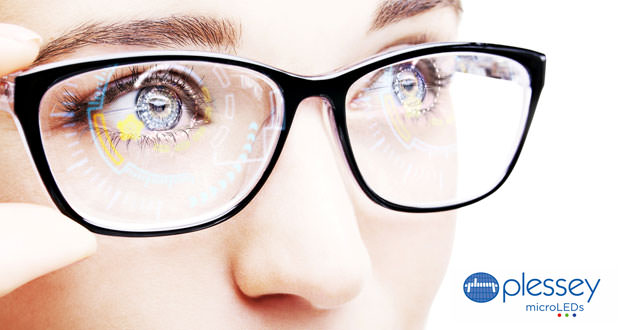Facebook thinks of microLED for augmented reality glasses
An important agreement has been signed with Plessey, the British microLED company, for the development of comfortable AR glasses to wear. But the debut will take place not earlier than 2023.
Augmented reality seems to all intents and purposes the next big thing on the technological landscape: many realities are working on it, more or less behind the scenes. If, from the point of view of software resources, the AR paradigm is not a big problem, the main obstacle right now is the hardware.
It is a really difficult task to be able to condense all the technology you need (sensors, displays, communication modules, batteries) in the small spaces of a wearable device. If it has already been – and to some extent, still is – difficult to do this with smartwatches, the level of difficulty increases when facing the design of an object even more stingy with spaces such as a pair of glasses.
Even Facebook, as well as other companies, from Google to Apple, is working on it and has set itself the goal of being able to create AR glasses that can be worn comfortably for a day: it means that they must be comfortable enough, offer an answer convincing and pleasant to use and have an autonomy of 12-15 hours at least. It is a process that will take a few more years, and Mark Zuckerberg’s company considers the project as long-term for a possible debut between 2023 and 2025.
In this context, today’s announcement of Plessey, a British company engaged in the production of microLED technologies specifically dedicated to wearable AR solutions on the face, is of particular importance. The company has announced that it is working with Facebook to ” create nine technologies with potential uses in the AR/VR sector “.
And this is a particularly important collaboration since it foresees a new commercial agreement according to the terms of which Plessey will dedicate its production capacity to the realization of microLED panels for Facebook. It cannot be excluded that this agreement may one-day turn into something deeper, perhaps into an acquisition.
Beyond speculation, Plessey will take care of creating a series of microLED display prototypes to help Facebook in the development of its AR project. It is not clear exactly what can be treated, but Plessey states that its RGB displays based on the CMOS process are able to combine high pixel density, high brightness, low power consumption, and a high refresh rate.
A solution of this type would be completely different from the first concrete iterations of the concept of augmented reality where the experience was reduced to seeing a small corner within the user’s field of vision: the ambition is to create a device that can show information across the visual field, paving the way for new and innovative applications.
The social network of Mark Zuckerberg has already started a collaboration with Luxottica, the giants of the glasses, for the development of aesthetically appealing frames for the realization of his AR viewers. In the meantime, to bridge the gap between now and 2023/2025, Facebook would also have a less ambitious and temporary solution in the pipeline to start getting the public used to new experiences in augmented reality.

